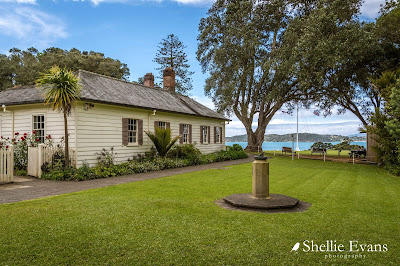Catch-up
Continuing on from Part 1 (and in time for Waitangi Day)
I was keen to check out the Waitangi Treaty Grounds & Museum, a little less keen to pay $50 to do so but happy when they halved it for a 'NZ Resident'. In fact visiting the recently opened Museum of Waitangi (Feb, 2016) alone would have been well worth the full fee. It really is a masterpiece and done extremely well, allow at least an hour to walk through it or more if your are a history buff. Unfortunately I have no photos to show you, it's very dark inside and I was moving quite fast through the exhibits.
From the museum is a short walk through native bush and up a gravel track to the Upper Treaty Grounds. The Waitangi Treaty Grounds is where Maori chiefs first signed their accord with the British Crown- the Treaty of Waitangi- Te Tiri of Waitangi, New Zealand's founding document.
Te Whare Runanga (the House of Assembly) the magnificently carved meeting house at Waitangi stands facing the Treaty House, the two buildings together symbolising the partnership between Maori & the British Crown.
Carving for for the Meeting House began in 1934 and it was opened on 6 February, 1940, 100 years after the first signing of the Treaty of Waitangi.
The flagpole at 34 metres high, takes centre stage on a huge expanse of Flagstaff Lawn overlooking the calm waters of the Bay of Islands. Since 1974, three flags have usually been flown on it- the New Zealand flag, the Union flag, and the flag of the United Tribes of New Zealand which was chosen in 1834.
The story of New Zealand's flags explained (click the photo to enlarge)
A tour guide explains the in and outs of the Treaty (he's going to be there a long time!)
The Treaty House was originally known as 'the Residency'. It is where James Busby conducted much of his official business as the British government's representative in New Zealand from 1833 to 1840. It was also home for James, his wife Agnes & their six children.
It's been interesting to see Sir Hekenukumai Busby formally receiving his knighthood at Waitangi yesterday, he has his own special connection to Waitangi. James Busby, the British government representative became godfather to Teripi Temaru, one of Sir Hekenukumai's ancestors, when Temaru converted to Christianity, gifting him the Busby surname.
As I walked back down the track to the Lower Treaty Grounds and Hobson Beach, I stopped to photograph this beautiful tui feeding on the Flax/Hakakeke flowers. He/She was displaying the iridescent blue of it's feather to perfection.
At 35 metres long, the canoe needs a minimum of 76 paddlers to handle it safely on the water. It weighs 6 tonnes when dry & 12 tonnes when saturated. The waka was built as part of Ngapuhi's contribution to mark the centenary of the Treaty signing and was launched in 1940. It was then laid up for 34 years in a canoe shelter alongside the meeting house.
In 1974, the waka was renovated for the Queen's visit to Waitangi and a canoe shelter built to house it near the shore. After the Queen rode in the waka she designated it 'Her Majesty's Ship', which makes the waka part of her Royal Navy! The waka is launched every year on the 6 February as part of the Waitangi Day celebrations.
To be continued...Part 3













Hi Shellie and David,
ReplyDeleteLove that shot of the Tui, Fabulous!
Cheers from Poolburn Dam
Jimu & Christine
Woohoo!! Finally made it huh? You're making us mighty jealous! :) Enjoy yourselves.
Delete